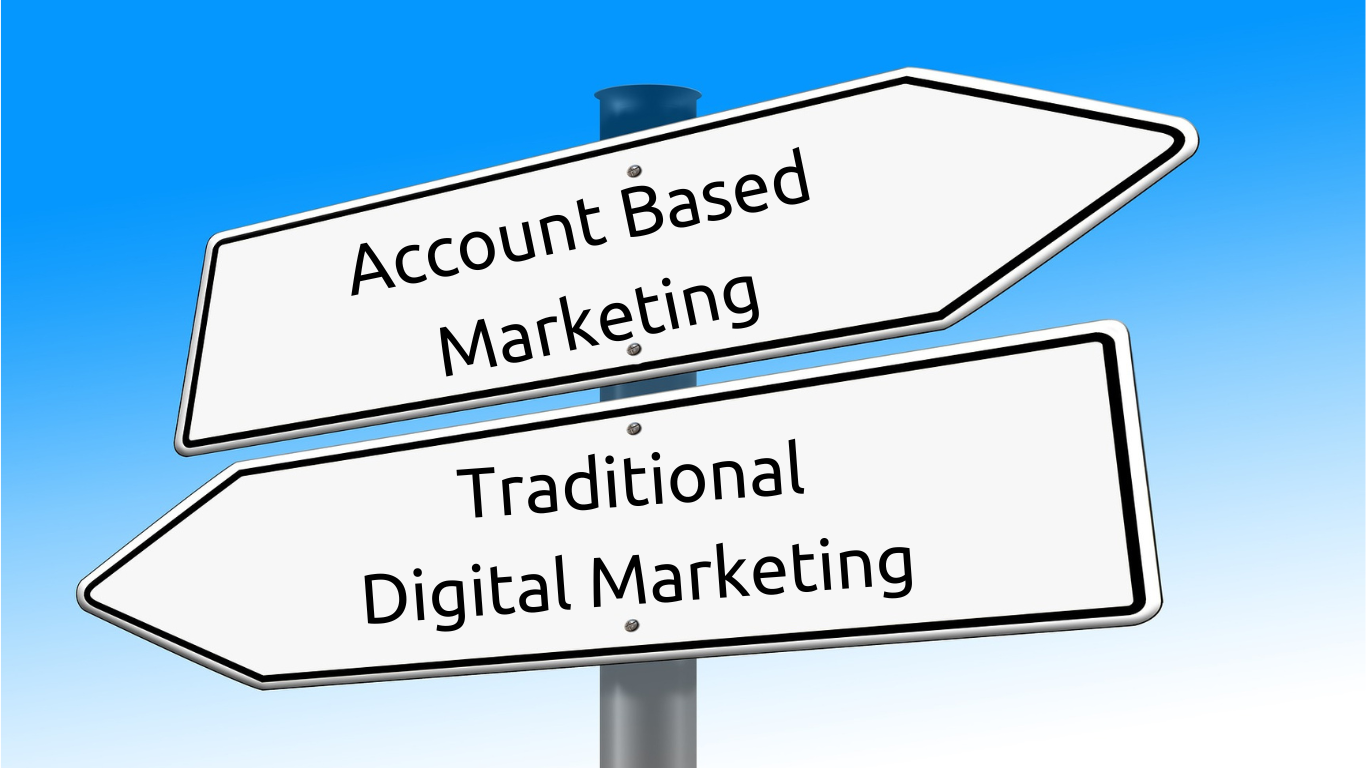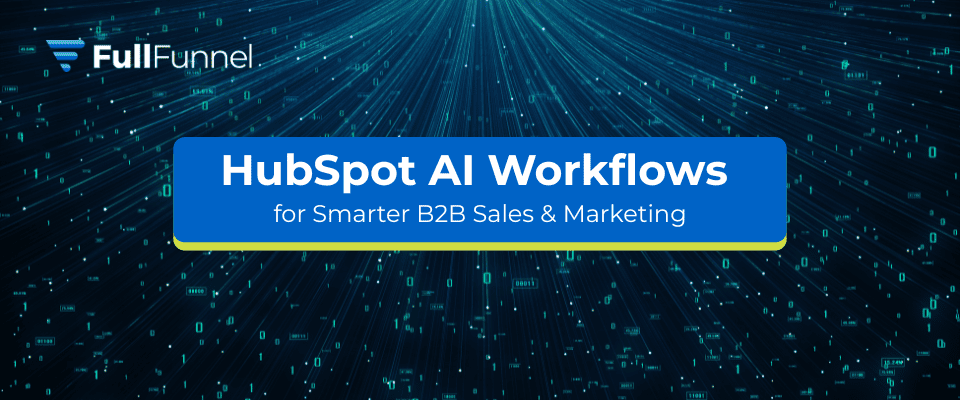
Traditional Digital Marketing vs. ABM: Which Approach is Right for You?
Digital marketing has become an essential part of any business strategy, but there are many different approaches to choose from. Two of the most popular approaches are traditional digital marketing and account based marketing (ABM).
Traditional digital marketing refers to the broader approach of targeting a wide audience through various online channels. It involves tactics such as search engine optimization (SEO), social media marketing, email marketing, and content marketing. This approach aims to attract as many potential customers as possible and nurture them through the sales funnel.
Account Based Marketing (ABM) is a more targeted approach that focuses on individual accounts or specific target companies. It involves identifying key decision-makers within those accounts and tailoring personalized marketing strategies to engage with them directly. ABM is effective for businesses with a small target market or high-value clients.
Account based marketing, on the other hand, is a more targeted approach that focuses on developing relationships with a select group of high-value accounts. ABM is typically used by B2B companies, but it can also be used by B2C companies that sell high-ticket items.
Benefits of Traditional Digital Marketing
The benefits of traditional digital marketing are its ability to reach a wide audience, generate leads, and build brand awareness. By targeting a broader audience, businesses can increase their chances of attracting potential customers and nurturing them through the sales funnel.
Here are expanded descriptions of the benefits of traditional digital marketing:
- Broad reach: Traditional digital marketing allows you to reach a large audience of potential customers through a variety of channels, such as search engine optimization (SEO), pay-per-click (PPC) advertising, social media marketing, and email marketing. This is especially beneficial if you have a new product or service that you need to get the word out about.
- Relatively low cost: Compared to other marketing channels, such as television or radio advertising, traditional digital marketing is relatively inexpensive. This makes it a good option for businesses of all sizes.
- Scalable: Traditional digital marketing campaigns can be easily scaled up or down to meet your budget and needs. This means that you can start with a small campaign and gradually increase your spending as you see results.
- Measurable: Traditional digital marketing campaigns are highly measurable, so you can track your progress and see what's working and what's not. This allows you to make adjustments to your campaigns as needed to ensure that you are getting the best possible results.
- Targetable: Traditional digital marketing campaigns can be targeted to specific demographics, interests, and behaviors. This helps you ensure that your message is reaching the right people. For example, you can target your ads to people who have searched for certain keywords, visited certain websites, or liked certain social media pages.
In short, traditional digital marketing is a cost-effective and measurable way to reach a large audience of potential customers with targeted messages.
Benefits of Account Based Marketing
Account based marketing (ABM) offers a personalized approach to engage key decision-makers in specific target companies. By tailoring strategies for individual accounts, ABM allows for more precise messaging and targeting. This can lead to higher conversion rates and better relationships with potential customers. ABM allows businesses to focus their efforts on high-value accounts or target companies, increasing the chances of success. With ABM, marketing strategies can be customized to fit the needs and preferences of key decision-makers, resulting in more relevant messaging.
Account Based Marketing (ABM) offers a number of benefits, including:
- Targeted approach: ABM allows you to focus your marketing efforts on a select group of high-value accounts, which helps you create more personalized and relevant messages.
- Higher conversion rates: ABM campaigns typically have higher conversion rates than traditional digital marketing campaigns because the messaging is more targeted and the content is more relevant to the specific accounts.
- More effective for complex sales: ABM is particularly effective for complex sales, where it can take multiple decision-makers to purchase a product or service. ABM allows you to target all of the key decision-makers at each account and nurture them through the sales process.
- Higher ROI: ABM campaigns typically have a higher ROI than traditional digital marketing campaigns because ABM is more focused on converting high-value accounts.
Can Traditional Digital Marketing and Account Based Marketing Be Used Together?
Yes, traditional digital marketing and ABM can be used together. In fact, many businesses use a combination of both approaches to achieve their marketing goals.
For example, you could use traditional digital marketing to generate leads and awareness for your brand, and then use ABM to nurture and convert your highest-value leads. You could also use traditional digital marketing to target a broad audience, and then use ABM to target specific accounts within that audience.
Which Approach is Right for You?
Whether traditional digital marketing or ABM is the right approach for you depends on your business goals and target audience. If you are looking to reach a large audience and generate leads, then traditional digital marketing is a good option. If you are looking to build relationships with key accounts and close complex deals, then ABM is a good option.
If you are not sure which approach is right for you, it is a good idea to talk to a digital marketing expert. They can help you assess your needs and develop a marketing strategy that is right for your business.
Traditional Marketing vs Digital Marketing FAQs
- What is traditional digital marketing? Traditional digital marketing refers to strategies that target a broad audience through various online channels, including search engine optimization (SEO), social media marketing, email campaigns, and content marketing. The primary goal is to attract as many potential customers as possible and guide them through the sales funnel.
- What is Account-Based Marketing (ABM)? Account-Based Marketing (ABM) is a strategic approach that focuses on targeting specific high-value accounts or companies. It involves identifying key decision-makers within these accounts and tailoring personalized marketing strategies to engage them directly. ABM is particularly effective for businesses aiming to build relationships with select groups of high-value clients.
- How does traditional digital marketing differ from ABM? Traditional digital marketing casts a wide net to reach a large audience, aiming for broad lead generation and brand awareness. In contrast, ABM is highly targeted, focusing on specific accounts with personalized content and strategies designed to meet the unique needs of those accounts.
- What are the benefits of traditional digital marketing? Traditional digital marketing offers several advantages, including:
- Broad Reach: Ability to connect with a large and diverse audience.
- Cost-Effectiveness: Generally lower costs compared to traditional media like TV or print.
- Scalability: Campaigns can be adjusted in size and scope based on budget and goals.
- Measurability: Access to analytics allows for tracking performance and ROI.
- Targeting Capabilities: Options to target specific demographics, interests, and behaviors.
- What are the benefits of Account-Based Marketing? ABM provides several key benefits:
- Targeted Approach: Focuses efforts on high-value accounts, leading to more personalized and relevant messaging.
- Higher Conversion Rates: Tailored strategies often result in better engagement and conversion.
- Effectiveness for Complex Sales: Ideal for scenarios involving multiple decision-makers and longer sales cycles.
- Higher ROI: Concentrated efforts on valuable accounts typically yield a better return on investment.
- Can traditional digital marketing and ABM be used together? Yes, integrating both approaches can be highly effective. Businesses can use traditional digital marketing to generate broad awareness and leads, then apply ABM strategies to nurture and convert high-value prospects. This combination allows for both wide reach and personalized engagement.
- Which approach is right for my business? The choice between traditional digital marketing and ABM depends on your business goals and target audience. If your objective is to reach a large audience and generate widespread leads, traditional digital marketing may be suitable. If you're aiming to build relationships with specific high-value accounts and manage complex sales processes, ABM might be the better approach.
- How do I implement an Account-Based Marketing strategy? Implementing an ABM strategy involves:
- Identifying Target Accounts: Selecting high-value accounts that align with your business objectives.
- Researching Accounts: Understanding the needs, challenges, and decision-makers of each account.
- Developing Personalized Content: Creating tailored messages and offers that resonate with each account.
- Aligning Sales and Marketing: Ensuring both teams work collaboratively to engage and convert target accounts.
- What metrics are used to measure the success of ABM? Success in ABM can be measured using metrics such as:
- Engagement Levels: Interactions and responses from target accounts.
- Conversion Rates: The percentage of target accounts that move through the sales funnel.
- Deal Size: Average revenue generated from targeted accounts.
- ROI: Comparison of revenue gained versus resources invested in the ABM strategy.
- What are common challenges in implementing ABM? Common challenges include:
- Resource Intensiveness: ABM requires significant time and effort to research and personalize strategies for each account.
- Alignment Between Teams: Ensuring seamless collaboration between sales and marketing teams can be challenging.
- Scalability: Scaling personalized strategies across multiple accounts without losing effectiveness can be difficult.




